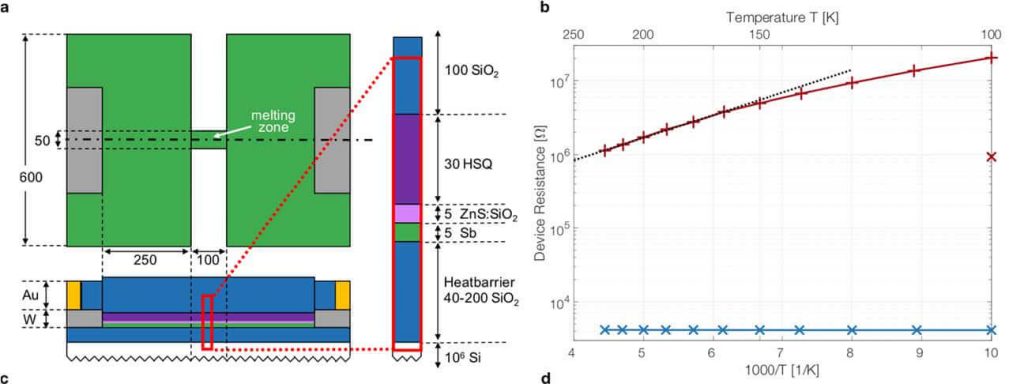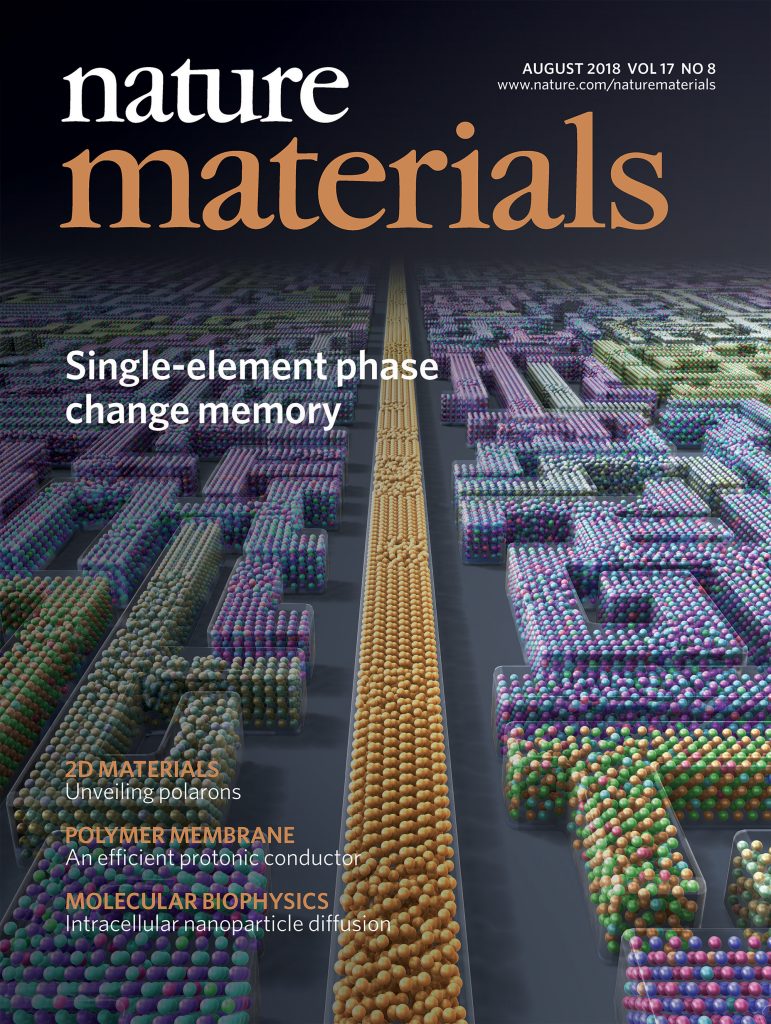Phase Change Memory illustration
An XVIVO illustration graces the August 2018 journal cover of Nature Materials and is also currently featured on their home page. XVIVO partnered with researchers at RWTH Aachen University in Germany to help visualize the results of their recent studies, which were published in Nature Materials.
The researchers were trying to improve on existing methods and devices for phase change memory (PCM), which stores data by changing between physical states of a material (ie, between crystalline and amorphous states).
PCM has been studied as a way to provide high-speed, high volume, and inexpensive data storage without needing a power supply to maintain the information. Previous iterations of PCM have been limited by the mixture of elements that are used in the PCM, which can affect its performance in the long term and be an obstacle to miniaturization.
The researchers at RWTH Aachen University designed a PCM device using only one element, antimony. Their results showed that the antimony PCM was stable, especially when confined to extremely small volumes.

XVIVO illustrated the concept behind the scientific advance in phase change memory research. The idea was to represent the monatomic layer as an elegant and simplified solution to building better PCM devices without the complications of different mixtures of elements.
